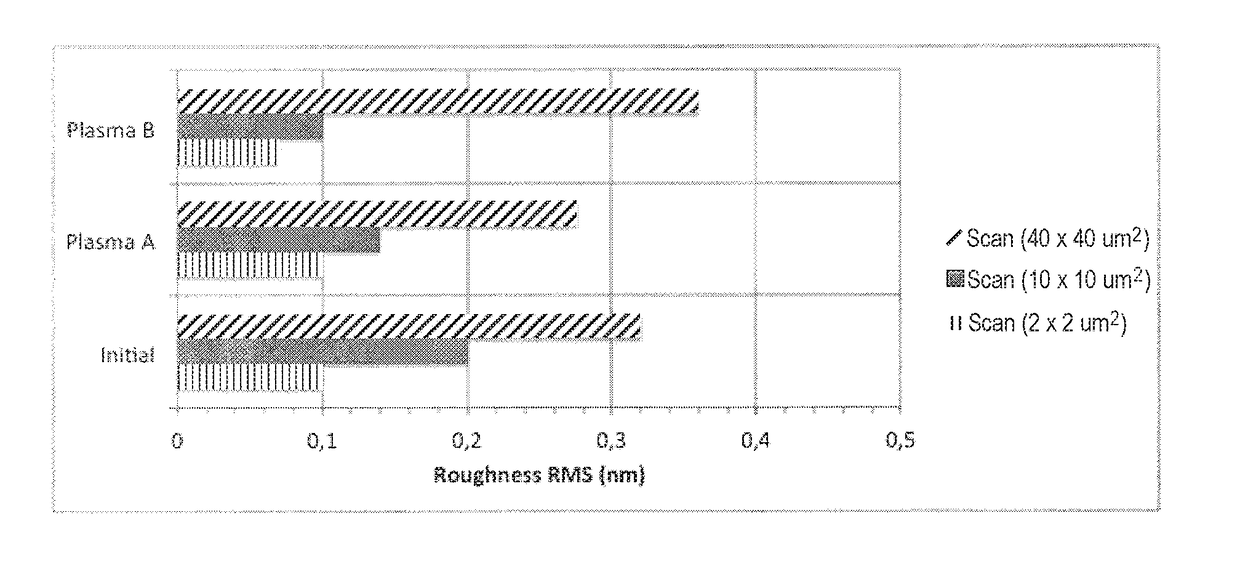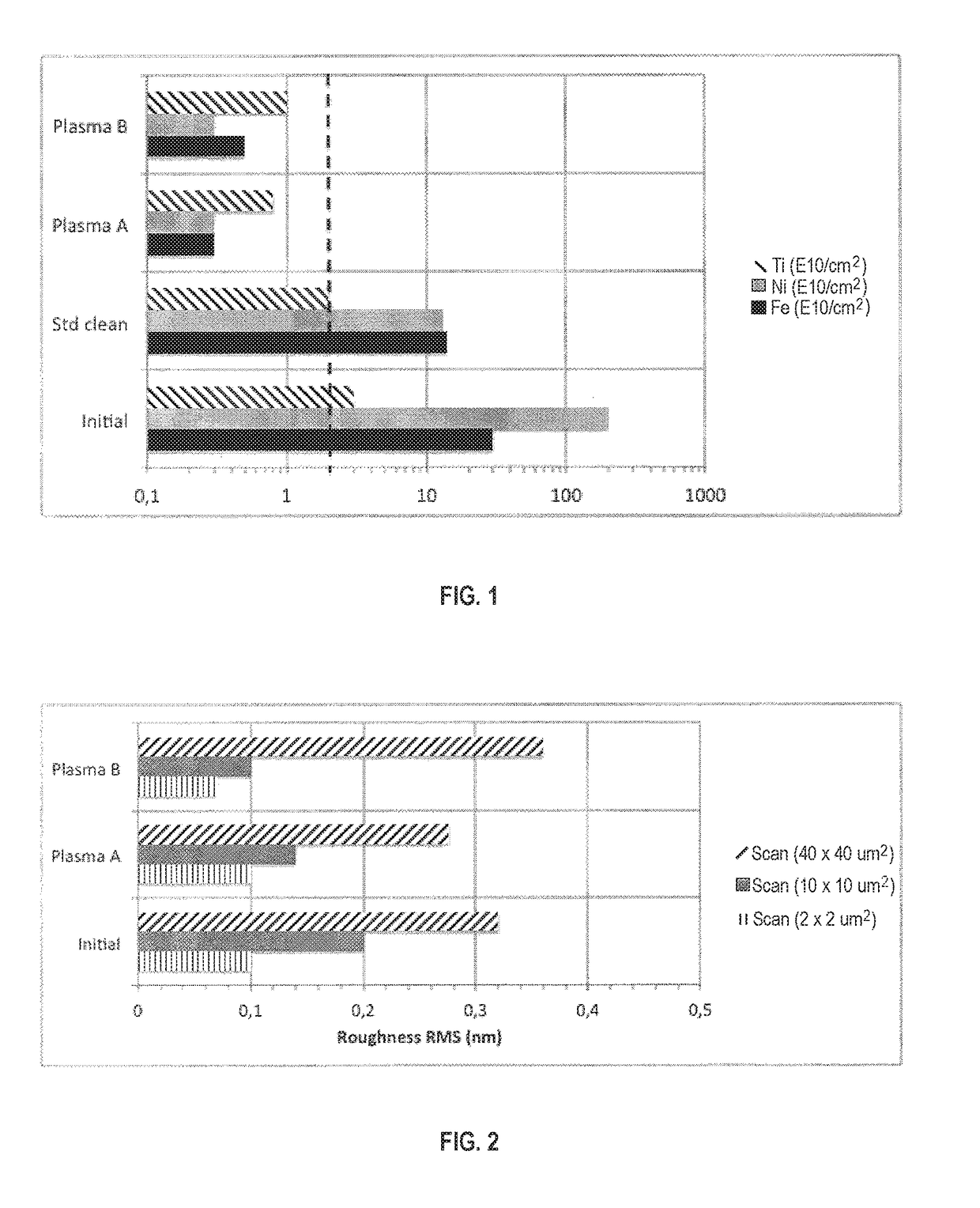Methods for reducing metal contamination on a surface of a sapphire substrate by plasma treatment
a sapphire substrate and metal contamination technology, applied in the direction of basic electric elements, electrical equipment, semiconductor devices, etc., can solve the problems of metal contamination on the substrate surface, sapphire wafer contamination, deterioration of the electrical performance of the active layer, etc., and achieve the effect of reducing metal contamination
- Summary
- Abstract
- Description
- Claims
- Application Information
AI Technical Summary
Benefits of technology
Problems solved by technology
Method used
Image
Examples
Embodiment Construction
[0035]The present disclosure relates to a method for reducing the metal contamination on a surface of a substrate comprising a plasma treatment of the surface of the substrate by ion bombardment, wherein a plasma of a supplied gas is generated and wherein a bombardment energy of the ions in the plasma is controlled by a radio frequency (RF) electromagnetic field. The bombardment energy of the ions is higher than a first threshold to tear the metal contaminants from the substrate surface, and the bombardment energy of the ions is lower than a second threshold to prevent a surface quality degradation of the substrate surface.
[0036]In some embodiments, the plasma may be generated from at least one kind of noble gas. As a non-limiting embodiment, a pure noble gas, chosen among He, Ne, Ar, Kr, Xe, may be used. A mixture of different noble gases may also be used. Noble gases may be preferred relative to other gases, such as reactive gases like chlorine and boron chloride, to avoid generat...
PUM
| Property | Measurement | Unit |
|---|---|---|
| gas pressure | aaaaa | aaaaa |
| gas pressure | aaaaa | aaaaa |
| surface roughness | aaaaa | aaaaa |
Abstract
Description
Claims
Application Information
 Login to View More
Login to View More - R&D
- Intellectual Property
- Life Sciences
- Materials
- Tech Scout
- Unparalleled Data Quality
- Higher Quality Content
- 60% Fewer Hallucinations
Browse by: Latest US Patents, China's latest patents, Technical Efficacy Thesaurus, Application Domain, Technology Topic, Popular Technical Reports.
© 2025 PatSnap. All rights reserved.Legal|Privacy policy|Modern Slavery Act Transparency Statement|Sitemap|About US| Contact US: help@patsnap.com


